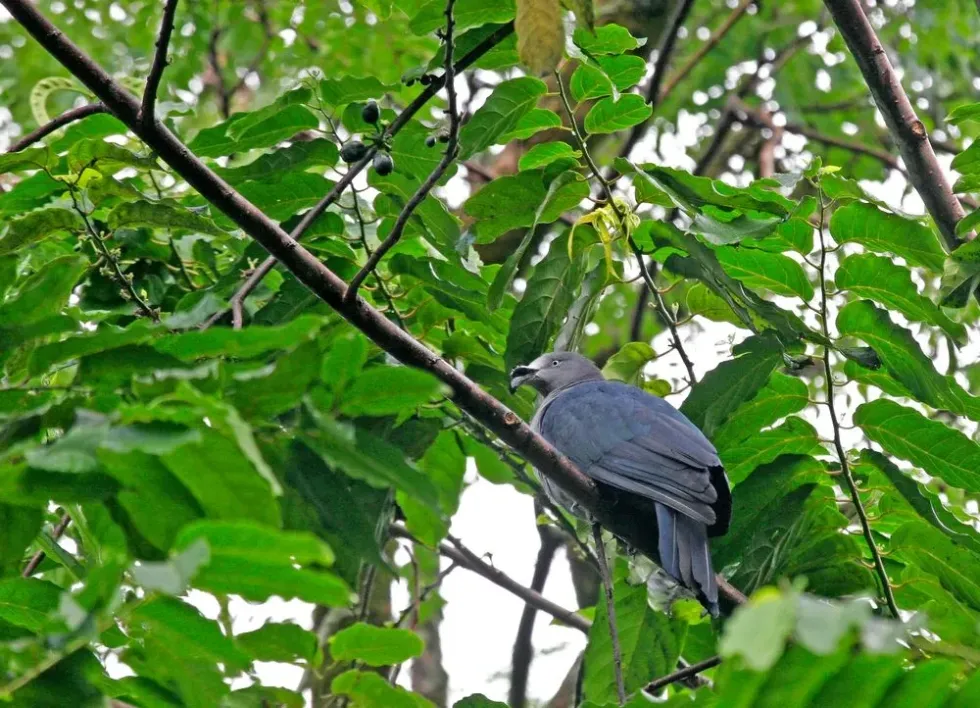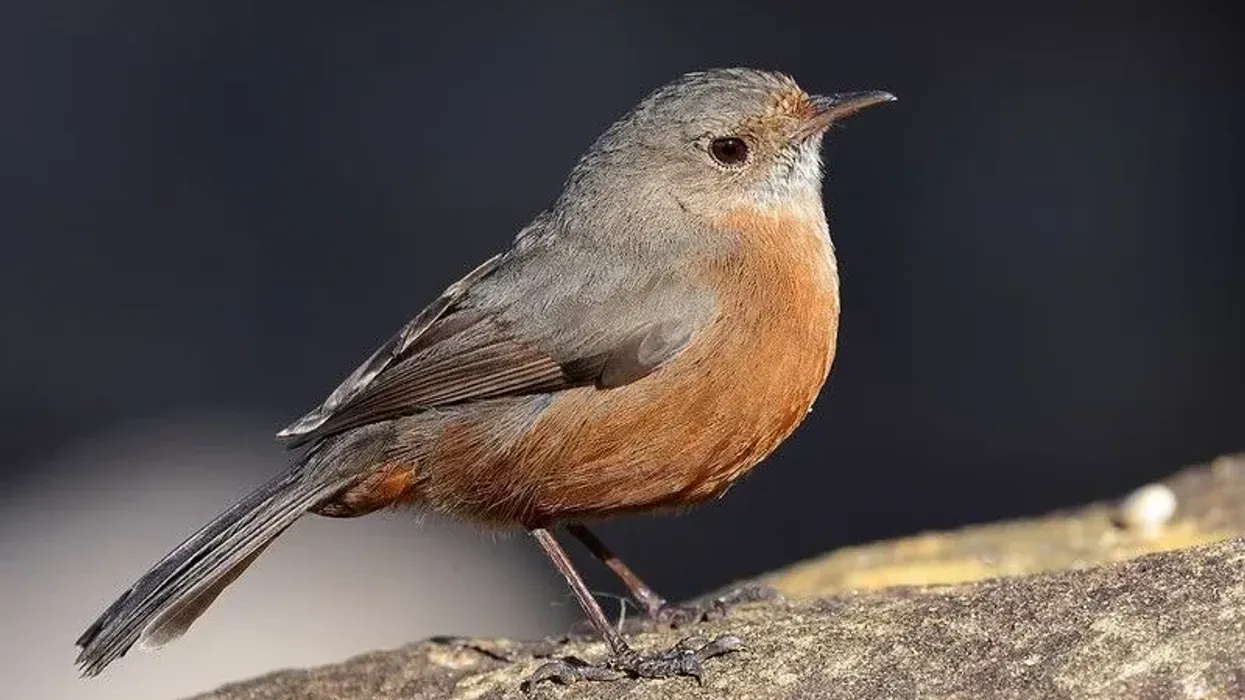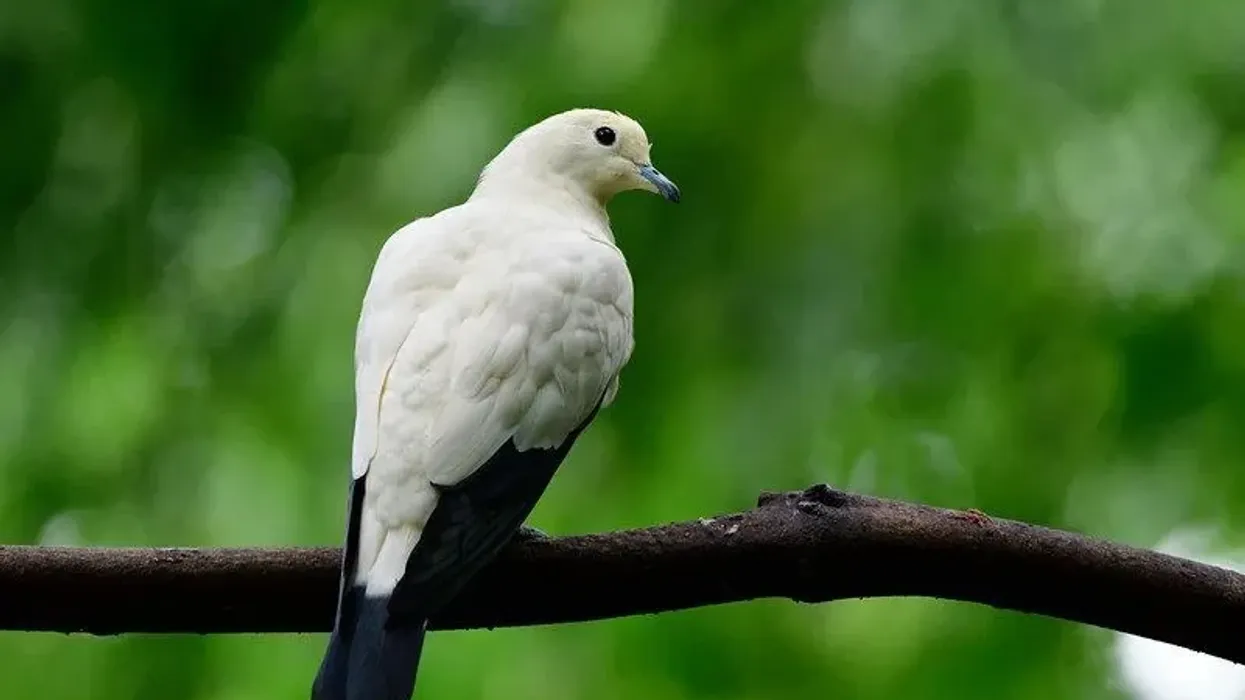Want your kids to know about rare birds? Introduce them to this imperial pigeon and soar down the Aves world and enrich his knowledge.
The Nukuhiva pigeon is an endangered bird native to the Marquesas islands from where it derives its name. It is also known as Upe and is revered in local culture.
The Marquesan imperial pigeon, Ducula galeata is under threat due to its dwindling numbers. However, recent conservation and awareness programs have helped in stabilizing the population. Although not in immediate threat of extinction, it does need more efforts to increase its number.
Once found all over the Marquesas Islands, the bird is now restricted to only some remote parts that are inaccessible to hunters. It is now illegal to hunt these birds.
Some of the major contributors of the Marquesan imperial pigeon Ducula galeata's diminished population is rampant poaching for meat, the introduction of feral grazing cattle in the islands, and habitat loss due to various developmental projects. The introduction of rats, pigs, and cats to Marquesas also likely contributes to the threats of this endangered species.
Plants like Miconia calvescens and pine which are more vulnerable to forest fires too, pose a threat in the near future even if they are not now.
Another menacing threat is diseases spread by exotic bird species, for instance, Plasmodium relictum. Invasive and alien species also lead to competition in food sources resulting in depreciating numbers of the pigeon.
To know more about this high at-risk bird, facts about the structure of their bills, nesting cavities, and perceived threats by this bird species, read the article below.
If you like this article, you can also read our articles on German nun pigeon facts and pink pigeon facts.
Marquesan Imperial Pigeon Interesting Facts
What type of animal is a Marquesan imperial pigeon?
The Marquesan imperial pigeon, Ducula galeata, is a bird belonging to the phylum Chordata, order Columbiformes, and family Columbidae which consists of pigeons and doves.
What class of animal does a Marquesan imperial pigeon belong to?
A member of the Aves class of vertebrates, the Marquesan imperial pigeon is a very rare species of bird on the verge of extinction, almost like the Nicobar pigeon.
How many Marquesan imperial pigeons are there in the world?
An exceedingly rare species, the population of Marquesan imperial pigeon, Ducula galeata in the world was estimated to be about 150 in 2008. However, active conservation and awareness have increased the population to around 250-300 in the French Polynesian island according to a 2016 record.
Where does a Marquesan imperial pigeon live?
The habitat of the Nukuhiva pigeon or the Marquesan imperial pigeon, Ducula galeata, consists of tropical moist lowlands, remote wooded valleys, secondary forests, and on the edge of orange and banana plantations.
What is a Marquesan imperial pigeon's habitat?
The Marquesan imperial pigeon is restricted to two islands of the Pacific nation of French Polynesia. The bird species lives at an elevation of 820-4265 ft (250-1300 m) from sea level.
It is found in some valleys in the western parts of Nuku Hiva and on Ua Huka island to which part of the species was translocated in recent years.
Who do Marquesan imperial pigeons live with?
The isolated species of Marquesan imperial pigeon, Ducula galeata, generally live in pairs or within a family avoiding contact with humans as well as other species of animals and birds as well.
How long does a Marquesan imperial pigeon live?
Due to its rarity, not much is known about the lifespan of a Marquesan imperial pigeon, Ducula galeata, however, researchers put an estimate of about 10 years in the wild.
How do they reproduce?
The breeding process and tactics of this species of bird are shrouded in mystery. However, recent observations and studies into the nesting activities reveal that the Marquesan imperial pigeon, Ducula galeata, nests all around the year but breeding peaks in the middle of the year from the months of May to October.
A courtship call of 'coo' has been observed. Record also shows adult birds allopreening each other's neck and breast while sitting on a high branch.
The adult birds build nests on branches of trees using sticks usually at mid-height in a densely covered forest. The adult female lays a single glossy egg.
What is their conservation status?
The International Union for Conservation of Nature (IUCN) Red List of Threatened Species had formerly categorized the Marquesan imperial pigeon, Ducula galeata, as Critically Endangered as the population of the birds dipped below 150. However, a later count found an increase in its number to around 300 adult pigeons in the world.
The IUCN then re-categorized the bird as Endangered.
Marquesan Imperial Pigeon Fun Facts
What do Marquesan imperial pigeons look like?
Inheriting the characteristic trait of a heavy, stout body and large size of the genus Ducula of Columbidae family, the only family under order Columbiformes, the Marquesan imperial pigeon, Ducula galeata, or Nukuhiva pigeon is a large bird species with broad wings.
It has a distinctively expanded cere flattened (a waxy flesh covering at the base of the upper bill) dorso-ventrally that gives it a duck-like appearance if looked at from a distance.
The large body of the bird found in the extant French island is dark gray in color with the wings and tail displaying a glossy greenish-blue or bronze-green tint.
The undertail coverts are chestnut-brown while the underparts of the wings are black or red.
It has a long black bill measuring 0.75–1.06 in (1.9–2.7 cm). The eyes have white irises.

*Please note that this is an image of a Polynesian imperial pigeon, not a Marquesan imperial pigeon. If you have an image of a Marquesan imperial pigeon, please let us know at hello@kidadl.com.
How cute are they?
The Nukuhiva pigeon or Marquesan imperial pigeon, Ducula galeata, is a regal bird that will definitely catch your attention.
How do they communicate?
The communication techniques of this imperial pigeon found in some valleys in the western part of the islands of French Polynesia are not really known as there is a limited record of the bird's behavior. However, it does have an advertising call coo-coo which has been identified as a courtship call.
Other than that they make a varied number of guttural sounds that almost sound like a cow mooing!
How big is a Marquesan imperial pigeon?
An adult male Marquesan imperial pigeon, Ducula galeata, has a record length of 22 in (55 cm) and the female has an approximate length of 19.7-21.1 in (50-53.5 cm). These pigeons are among the largest pigeon species in the world, only smaller than crowned pigeons of the genus Goura belonging to the same Columbidae family.
In comparison, the pigeon guillemot is smaller at 12-15 in (30-38 cm).
How fast can a Marquesan imperial pigeon fly?
The Marquesan imperial pigeon, Ducula galeata or Nukuhiva pigeon are not fast fliers owing to their rather large size.
How much does a Marquesan imperial pigeon weigh?
The average weight of the Marquesan imperial pigeon, Ducula galeata is around 2 lb (900 g).
What are the male and female names of the species?
As with other pigeon species, the male Marquesan imperial pigeon is called a cock pigeon while the female is known as a hen pigeon.
What would you call a baby Marquesan imperial pigeon?
Baby Marquesan imperial pigeons are called squabs, squeakers, or even fledglings!
What do they eat?
The endangered Nukuhiva pigeon is a frugivorous species. These pigeons are known to feast on fruits of different sizes found in the western part of their island habitat and also in the north. Their favorite fruit is the guava, Psidium guajava but they will feed on any fruit available on the islands, for instance, mango, figs, eugenia, Cordia, papaya.
Are they dangerous?
The Marquesan imperial pigeon (Ducula galeata) cannot be termed as dangerous. As with pigeons all over the world, they are approachable and not at all shy.
Would they make a good pet?
This imperial pigeon species might make for good pets but capturing these birds is illegal in Marquesas and Nukuhiva (Nuku Hiva), the only site of their existence in the whole world.
Did you know...
The Marquesan imperial pigeon, Ducula galeata has a feathery cere.
This imperial pigeon makes a flat nest during the breeding season. Most of the time it can be seen foraging for food at a forested ridge site. The bird of Ducula genus is often seen sitting atop canopies and cliffs single or in pairs.
A number of these birds were translocated to Ua Huka to increase their genetic base.
A description of the teenage imperial pigeon shows the birds having brown patterns on their wings which is absent in the adult phase and a brownish iris.
An identification of subfossils in the Henderson island indicated the presence of the Marquesan imperial pigeon on that island but later research disproved the presence. The description of the fossil helped to identify it as a different species.
It is a non-migratory bird seldom living its site of living except for foraging food, like the rock pigeon.
What type of calls do Marquesan imperial pigeons make?
Found in some valleys in the western parts of French Polynesia the Marquesan imperial pigeon, Ducula galeata are known to be quite vocal making loud calls with a deep timbre. A record shows the bird making a variety of calls including a harsh crow-like kra-aak, ululating urrr, neah-ah neah-ah, naw-naw among others.
Are Marquesan imperial pigeons endemic?
Much like their close kin, the Polynesian imperial pigeon, this bird is endemic to French Polynesia and is found only in Marquesas and Nuku Hiva in the north of the extant nation. The Marquesan imperial pigeon, Ducula galeata is an exceedingly rare bird found nowhere else in the world.
Here at Kidadl, we have carefully created lots of interesting family-friendly animal facts for everyone to discover! For more relatable content, check out these Ani bird facts and Anna's hummingbird facts pages.
You can even occupy yourself at home by coloring in one of our free printable pigeon coloring pages.










